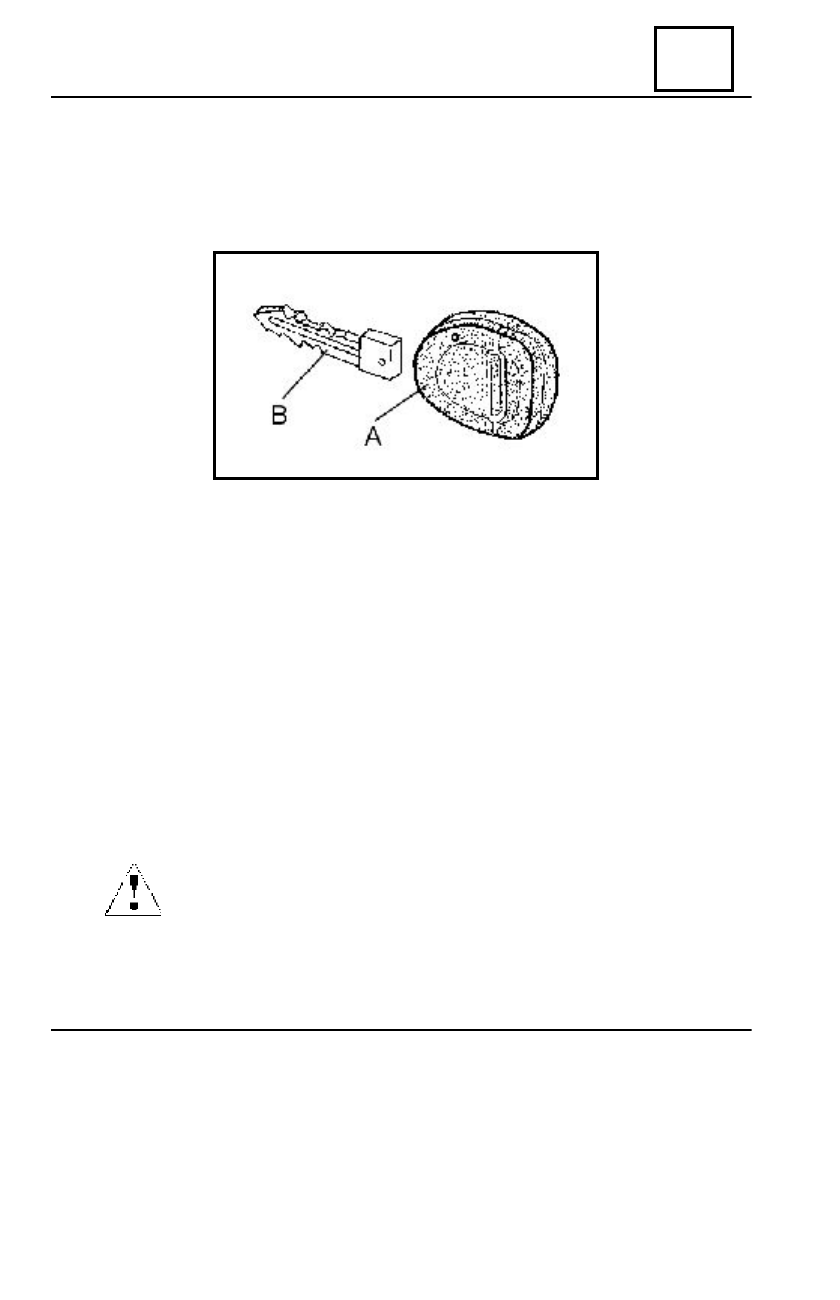Dacia SuperNova (engine E7J). Manual - part 117

82A
HORN - ENGINE IMMOBILISER
82A - 1
This type of anti starting system is based on the key recognition, which has a special construction.
It may be separated in two elements which can be identified in the following way (pict.1): the key
head (pos.A.) made of plastic, which can be dismounted and the metal insertion (pos.B.), which is
fixed and ensured by clipping in the key head.
In the key head, there is a coded independent electronic circuit, which is functioning without
battery. When setting the contact on, the anti starting bushing, placed around the starting contact,
is enquiring and catching the coded signal emitted by the key head, then sends it to the Electronic
Control Unit (E.C.U.) decoder. This one is attached on the front left pillar, under the lower casing
of the dashboard and has the function of receiving the code sent from the bushing. If the decoder
recognises the key code then it will send a coded signal to the injection computer, which compares
it with the previous memorised code and will authorise or not the start of the engine.
We mention that the system with radio frequency remote control (RF) of the doors blocking
/unlocking, has no influence to the anti starting system. In this case, the key head has a different
construction, having an activation button of the remote control and a red LED, which is lighted in
the moment of blocking/unlocking the doors, by pushing the key button. Inside the key head
there is the coded electronic circuit for the anti starting system and an imprinted electronic circuit,
supplied by a battery, for the RF remote control operation of blocking/unlocking the vehicle
doors.
The anti starting system is activated after approximate 10 seconds from the breaking of the
contact and is visualised by the blinking of the anti starting indicator placed on the instrument
panel.
If the battery is low charged, the tension drop on the starter, at starting,
may cause the activation of the anti starting system and the start of the engine is
impossible.
pict.1
GENERALITIES
ATTENTION